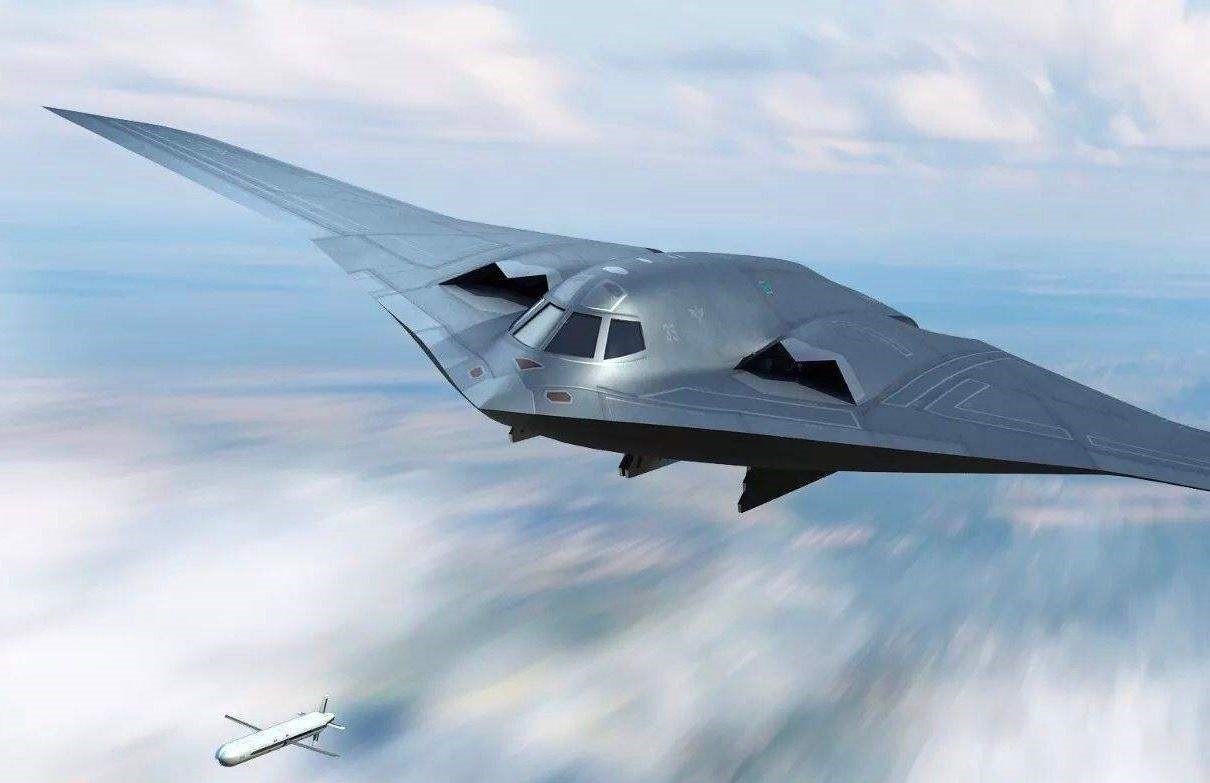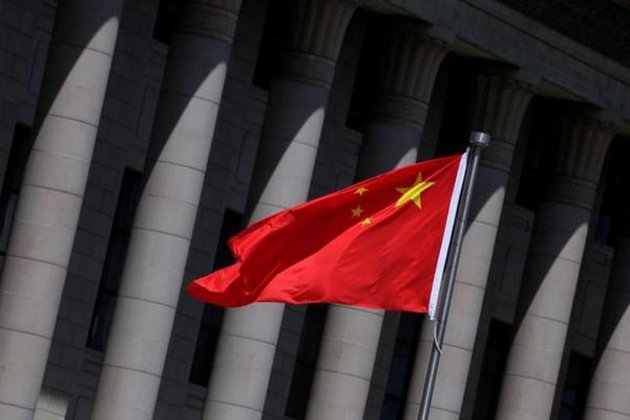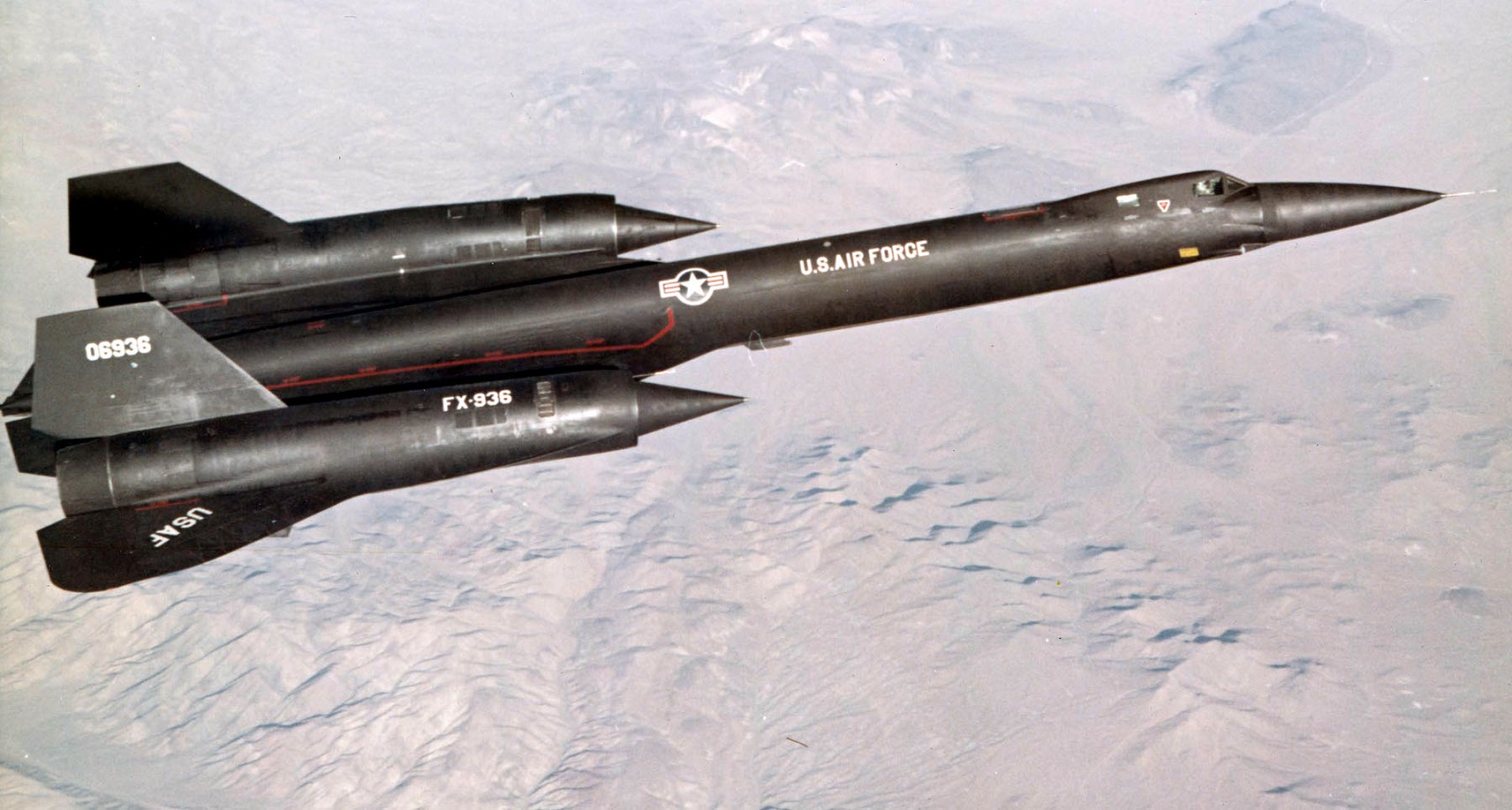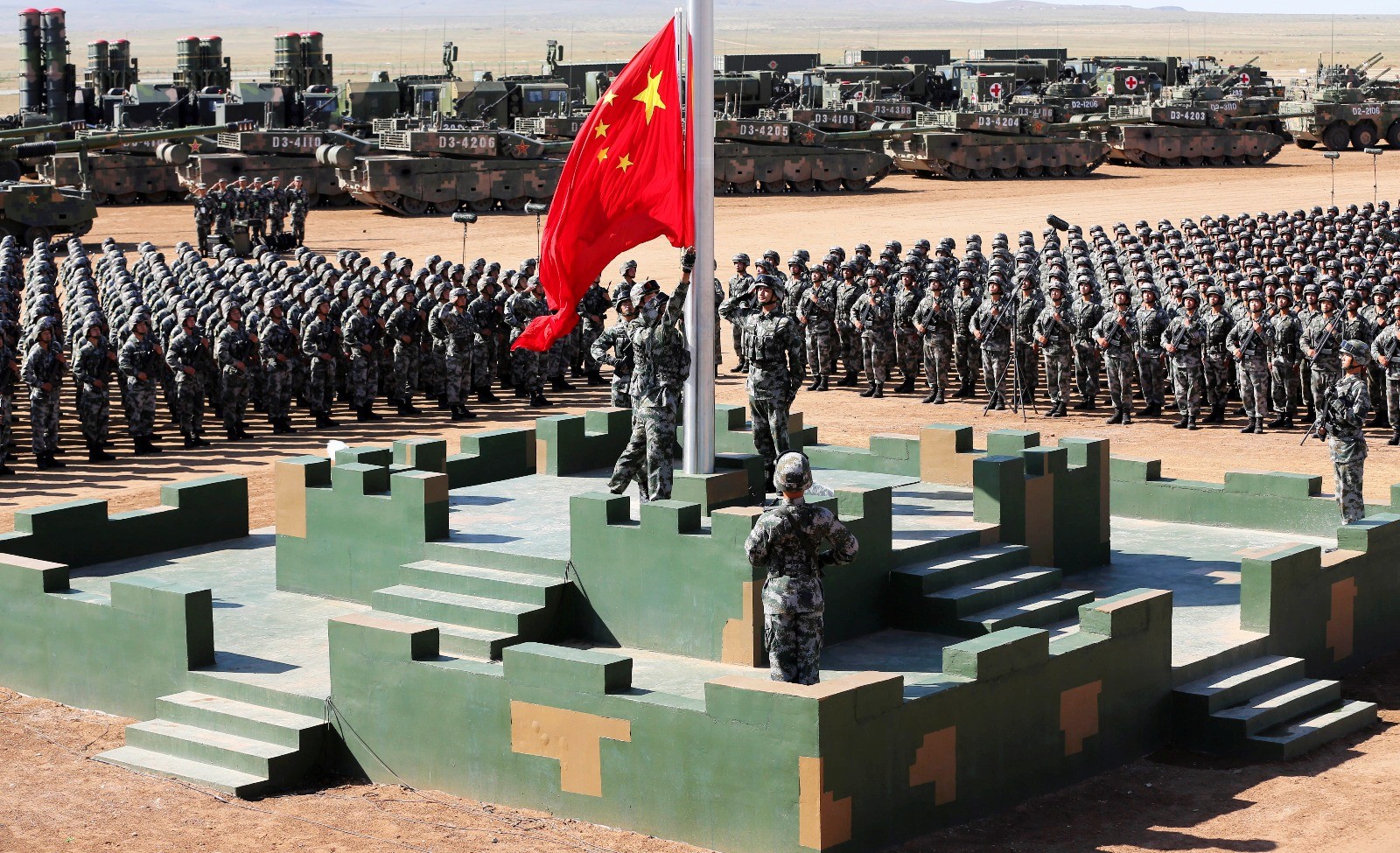Opinion
H-20 and JH-XX: China’s Wants Two (Yes, Two) New Stealth Bombers

The United States and the Australian Air Force formerly operated supersonic F-111 Aardvark regional bombers that had a similar mission profile, though lacking in stealth characteristics. Furthermore, in the early 2000s, the Pentagon considered procuring bomber variants of the Raptor stealth fighter and the YF-23 before passing on that idea in favor of the B-21 Raider strategic stealth bomber. In fact, Tyler Rogoway and Joseph Trevithick at The Drive speculate that the JH-XX concept may have been informed in part by technical documents possibly acquired by Chinese hackers for these aircraft.
In January 2018, two sentences in an annual report by the DIA on Chinese military power sent a minor shockwave rippling across the defense-related internet:
“The PLAAF is developing new medium- and long-range stealth bombers to strike regional and global targets. Stealth technology continues to play a key role in the development of these new bombers, which probably will reach initial operational capability no sooner than 2025.”
(This first appeared several months ago.)
Bombers, plural. In a separate chart, an un-designated next-generation “Tactical Bomber” is listed, denoted as being equipped with a high-resolution Active Electronically Scanned Array radar, precision-guided bombs and long-range air-to-air missiles.
In the last few years, China’s development of what appears to be a subsonic long-range heavy strategic bomber called the H-20 has become increasingly evident—especially in 2018, when the Chinese government began teasing a public unveiling to take place in 2019. The flying wing bomber, which apparently resembles the U.S. B-2 Spirit in form and function, is to be produced by Xi’an Aircraft Corporation, which already manufactures older H-6 strategic bombers and the chubby Y-20 transport plane.
However, the stealth “tactical” or “medium” bomber was news—sort of. The fighter-bomber in question is believed to refer to the JH-XX, a rival stealth bomber concept proposed by Shenyang Aircraft Corporation believed to have been passed over in favor of the longer-range H-20. Shenyang is better known for producing fighters, including Chinese derivatives of the Russian Flanker jet and a J-31 stealth fighter which may be exported or serve on Chinese aircraft carriers.
The first image of this JH-XX concept was leaked at a convention in 2013. Then in May 2018, the prestigious Chinese magazine Aviation Knowledge flashed concept art on its cover of a futuristic-looking stealth jet measuring roughly thirty meters in length, with two huge turbofan engines atop the rear fuselage, canted tail-stabilizers near identical to Northrop’s YF-23 Black Widow stealth prototype, a big bomb bay in the belly and side weapon-bays for carrying long-range air-to-air missiles. This image has since inspired model kits and online fan-art. (One should bear in mind that speculative artwork of the “F-19 stealth fighter” in the 1980s ended up bearing little resemblance to the actual F-117 stealth jet.)
It’s not clear why the DIA believes the JH-XX is actively under development. Rick Joe of The Diplomat, who has written arguably the most detailed English-language profile of the JH-XX prior to the DIA report, expressed his skepticism in a series of tweets:
“Regarding the DIA report ‘confirming’ a PLA stealthy medium bomber; the info hasn’t changed since last year when I wrote this piece: ‘To the best of our knowledge the JH-XX does not seem to be actively pursued…’”
“Now, maybe the DIA report was based on classified intel the public is not privy to, but from the quality of the rest of the report I doubt it,” he said in a separate tweet. “Chances are they relied on some open source/public articles about JH-XX and interpreted them a bit over zealously.”
Thus, it may be prudent to wait for further evidence to emerge before taking the JH-XX’s active development as a given.
Why would PLA even order two types of stealth bombers? Effectively, the JH-XX would represent a different set of design compromises. The H-20 trades speed in exchange for greater payload, range and stealth. The ‘game plan’ is for such a bomber is to penetrate enemy airspace without being detected at all, as it doesn’t have the agility to evade enemy fighters or missiles. It’s projected range of five thousand miles would allow it strike targets across the Pacific, especially if combined with aerial refueling and long-range missiles.
The JH-XX would likely have shorter range (900-1500 miles) and a smaller payload than the H-20, but would be much faster at speeds up to twice the speed of sound. (Note, however, that friction generate at Mach 2 may erode the expensive coatings of radar-absorbent materials on stealth aircraft.) Thus, while an JH-XX might eventually be detected as it sprints towards its target, the combination of speed and reduced detection range would theoretically give interceptors and air defenses too little time to react.
Overall, the H-20’s long range and heavier payload is more useful to the PLA. However, the JH-XX would bring a different mix of capabilities and might be better for penetrating certain very dense air-defense networks where evading detection may not be possible even for a stealthy H-20.
The United States and the Australian Air Force formerly operated supersonic F-111 Aardvark regional bombers that had a similar mission profile, though lacking in stealth characteristics. Furthermore, in the early 2000s, the Pentagon considered procuring bomber variants of the Raptor stealth fighter and the YF-23 before passing on that idea in favor of the B-21 Raider strategic stealth bomber. In fact, Tyler Rogoway and Joseph Trevithick at The Drive speculate that the JH-XX concept may have been informed in part by technical documents possibly acquired by Chinese hackers for these aircraft.
Unlike the H-20, the JH-XX’s high speed would make it viable for carrying air-to-air missiles, not only for self-defense, but for hit-and-run attacks on vulnerable support planes, or to rapidly intercept incoming bombers. While the JH-XX likely wouldn’t be optimized for short-range aerial dogfights against highly maneuverable fighters, its stealth, speed and large payload could still make it a deadly delivery platform for beyond-visual range air-to-air missiles.
One last intriguing application of the JH-XX concept could be naval strike. The PLA Naval Air Force currently operates 250 JH-7 ‘Flying Leopard’ supersonic naval strike bomber. These non-stealthy planes depend on long-range anti-ship missiles and electronic warfare to overcome the formidable air defenses of modern surface warships. A stealth fighter bomber could conceivably get much closer to, say, an opposing carrier-task force, before being detected—giving the targeted vessels a much smaller window to engage their defenses. Of course, stealth capabilities might also make the JH-XX an especially survivable electronic warfare and spy plane in its own right. Naval analyst Robert Farley has speculated that the JH-XX might even be intended for carrier deployment.
If the JH-XX is truly under active development, then additional rumors and photos may eventually surface. Until then, the supersonic stealth-bomber’s development status must come with an asterisk, even if that won’t dissuade model-makers and defense writers alike from speculation.
Sébastien Roblin holds a master’s degree in conflict resolution from Georgetown University and served as a university instructor for the Peace Corps in China. He has also worked in education, editing, and refugee resettlement in France and the United States. He currently writes on security and military history for War Is Boring.
Opinion
Military rituals and military culture in China

Military culture influences military thinking and military strategy. Today, the armed forces of the major powers have the goal of defending their national interests and contributing to world peace.
(more…)Opinion
Forget the SR-71 Spy Plane: Meet the CIA’s A-12 (Was It Even Better?)

Key point: Both spy planes played key roles in the Cold War.
Analysis of Week’s photos located the USS Pueblo near Wonsan anchored next to two patrol boats—and also revealed that Pyongyang had not mobilized its troops for war. This led Johnson to rule out plans for a preemptive or punitive strike in favor of diplomatic measures which eventually saw the ship’s abused crew released nearly a year later.
On October 30, 1967, a CIA spy-plane soared eighty-four thousand feet over Hanoi in northern Vietnam, traveling faster than a rifle bullet at over three times the speed of sound. A high-resolution camera in the angular black jet’s belly recorded over a mile of film footage of the terrain below—including the over 190 Soviet-built S-75 surface-to-air missiles sites.
The aircraft was an A-12 “Oxcart,” a smaller, faster single-seat precursor variant of the Air Force’s legendary SR-71 Blackbird spy plane.
The jet’s driver, Dennis Sullivan had earlier flown one hundred combat missions in an F-80 Starfighter over Korea for the U.S. Air Force. But Sullivan was technically no longer a military pilot—he had been “sheep-dipped,” temporarily decommissioned to fly the hi-tech jet on behalf of the CIA. He now sat in the cramped cockpit in a refrigerated space suit, as the friction generated by his plane’s Mach 3 speeds heated the cockpit to over five hundred degrees Fahrenheit.
Sullivan noted warnings light up on his instrument panel as Vietnamese Fan Song radars locked onto him. But they did not launch missiles. In twelve-and-a-half minutes he completed his run and looped around over Thailand, where he received aerial refueling. Then he embarked on a second pass.
But the North Vietnamese were waiting for him. A missile launch notification warned him that a 10.5-meter-long missile was heading towards him.
Decades later, Sullivan described in a speech seeing one of the missiles streak just past him, two-hundred meters away.
“Here comes a big’ol telephone sailing right by the cockpit—going straight up. That’s interesting . . . So I continued down the route, and didn’t see anything—until I got down the road, and then I could see behind me in the rear-view periscope at least four missile contrails, all spread out. Those four contrails went up about 90-95,000 feet and all turned over, bunched up in a line, headed for my tail end.”
The A-12 officially had a maximum speed of Mach 3.2—but the missiles that were following Sullivan could attain Mach 3.5.
“I said, ‘Holy smokes—those things fly pretty good up there for something which doesn’t have much in the way of wings.’ So I watched them come.… They’d get up right behind me, very close, and all of the sudden there’d be a big red fireball—a big white cloud of smoke—and you’d immediately pull away from it. You were going thirty miles a minute. [Note: actually, 41 miles per minute!] Every one of those SAMs guided absolutely perfectly and did the same darn thing.”
The missile’s 440-pound proximity-fused warhead was designed to swat planes out of the sky within 65 meters of the point of detonation. However, in the thinner air of the upper atmosphere, its fragments could travel up to four times as far.
Sullivan escaped and landed his A-12 in Kadena Air Base, where it spent several minutes cooling on the tarmac before mechanics could even touch its friction-heated skin. The stress of the heat and high speeds exacted a steep physical toll on the jet’s pilots, who lost an average of five pounds of body weight on the completion of their three to four- hour missions.
He was sitting for debriefing when mechanics burst in the room to show him two metal fragments from a missile’s nose cone they had found buried under his low left wing—just shy of his jet’s fuel tank.
Later when, Sullivan’s camera footage was found to have captured the ghostly white contrails of six surface-to-air missiles surging towards him from the ground.
Operation Black Shield
The CIA’s twelve ultra-fast A-12 jets were doomed to a brief operational career after the first flight in 1962. Following on the heels of several U-2 spy plane shootdowns, Washington was no longer willing to authorize overflights of Soviet territory which the A-12 had been designed to perform. Meanwhile, the Air Force ordered a larger SR-71 variant of the A-12 that was deemed superior in a “fly off” in November 1967. Unwilling to fund both highly similar aircraft, the CIA’s A-12 fleet was promptly scheduled for retirement.
However for ten months, the A-12 briefly filled a vital niche providing rapid high-value photo intelligence over Asia, where the political and military risks were deemed acceptable. Between May 31, 1967, and March 8, 1968, CIA drivers flew A-12 on twenty-nine spy missions over Cambodia, North Korea and Vietnam in an operation codenamed Black Shield. The jets flew out of Kadena Airbase in Okinawa, Japan, supported by over 250 support personnel.
Initially, President Lyndon B. Johnson was concerned by reports that North Vietnam had obtained Surface-to-Surface (SSM) missiles for attacks on South Vietnam. On May 31, 1967, CIA driver Mele Vojvodich took of in a rainstorm and recorded a mile-long reel of camera footage covering most of Northern Vietnam. The reel was then air-transported for development by Kodak in Rochester, NY. The verdict, confirmed by subsequent overflights, was that Hanoi had no SSMs after all.
A-12 intelligence often directly influenced LBJ’s decisions to commit to air raids during the Vietnam War. However, the Oxcart’s stealth features never proved adequate to avoid detection by Soviet-built radars.
On October 28, 1967, an S-75 launched a missile at an A-12 flown by Miller, but did not come particularly close. However, after Miller’s close call two days later on October 30, the Black Shield flights were temporarily suspended. A later January 4 mission on the same route over Hanoi also elicited a missile launch, to no effect.
Meanwhile, on January 23, 1968, North Korean patrol boats seized the USS Pueblo, an American spy ship operating in international waters, taking her crew into captivity. Worrying the incident, combined with a failed commando raid on the South Korean presidential palace, might herald a second Korean War, Johnson was persuaded to dispatch an A-12 flown by Jack Weeks over North Korea on January 26.
Analysis of Week’s photos located the USS Pueblo near Wonsan anchored next to two patrol boats—and also revealed that Pyongyang had not mobilized its troops for war. This led Johnson to rule out plans for a preemptive or punitive strike in favor of diplomatic measures which eventually saw the ship’s abused crew released nearly a year later.
A-12s flew two additional missions over North Korea to keep tabs on the ship, which was eventually moved to Pyongyang. Tragically, Weeks died a half-year later on June 5 when a malfunction in his A-12’s starboard turbojet engine caused its to overheat, breaking his plane apart over the South China Sea. Sixteen days later, a CIA A-12 made its last flight before the type was retired from service.
Sullivan’s close brush over Vietnam suggests its fortunate no A-12 overflights were authorized over the Soviet Union, where they would have been exposed to even greater peril, from high-speed interceptors and more advanced SAMs like the S-200 (SA-5). Today, such high-risk photo intelligence is largely acquired by satellite, or by expendable drones.
Sébastien Roblin holds a master’s degree in conflict resolution from Georgetown University and served as a university instructor for the Peace Corps in China. He has also worked in education, editing, and refugee resettlement in France and the United States. He currently writes on security and military history for War Is Boring. (This first appeared in June 2019.)
Image: DVIDShub.
Opinion
SUN: China’s Military Deserves America’s Respect, But Not Its Fear

Key point: China’s military is advancing rapidly, but it is still plagued by corruption and discipline problems.
China’s new defense white paper has been eagerly awaited by Western analysts searching for clues to Beijing’s national security strategy.
The 2019 white paper (the last one was in 2015) lays out general principles of China’s defense policy. It avows the new face of the People’s Liberation Army (PLA). Cyberwarfare, more flexible command and control, long-range naval operations. Change the names and numbers, and you could be forgiven for thinking this was a planning document from the U.S. military or an American thinktank.
But before we fear the onslaught of the Dragon, take a look at the problems that the white paper says China’s military must solve.
The most glaring is corruption, which has led to numerous senior officers being punished for crimes such as selling promotions. “China’s armed forces are tightening political discipline and rules, investigating and dealing strictly with grave violations of CPC discipline and state laws,” the white paper says. “China’s armed forces punish corruption in strict accordance with CPC [Communist Party] discipline and relevant laws, and rectify any malpractice in key construction projects and the procurement of equipment and material…They have worked to implement full-spectrum audit, intensify the audit of major fields, projects and funds, and perform strict audits over the economic liabilities of officers in positions of leadership. Active efforts have been made to monitor the cost-effectiveness of applied funds, conduct whole-process audit, and combine civil and military efforts in auditing.”
The U.S. military has no shortage of faults. Careerism, inflated prices for military equipment, weapons that don’t work as advertised, the revolving door between the Pentagon and the defense industry. Nonetheless, it is hard to imagine the Pentagon having to cite corruption as a major impediment to military efficiency.
The U.S. military also has its share of discipline problems, such as Alcohol abuse, and sexual harassment that has derailed the careers of several senior officers. But these pale compared to the discipline problems that worry the Chinese military:
“China’s armed forces are building a military legal system with Chinese characteristics and pressing ahead with a fundamental transformation in how the military is run…They are promoting legal awareness through public communication and education campaigns, establishing and improving the support mechanism of legal consultation and service, and advancing law-based management in the military. China’s armed forces are striving to manage the troops more strictly in all respects. They have fully implemented military rules and regulations, restored and improved the traditional mechanism of using bugles to communicate and command, carried out safety inspections to identify and tackle potential problems, stepped up garrison military policing, strengthened the management of military vehicles by targeted measures, and set up a mechanism of regular notification on garrison military policing.”
There was nothing truly surprising in the white paper. It’s no secret that China has been moving away from a huge, low-tech peasant military to a smaller, more agile and high-tech force. Still, there is plenty in the paper to disturb the West as well as China’s Asian neighbors. China will continue to replace older aircraft and ships with more advanced models. It is setting its eyes on distant horizons: the PLA will “address deficiencies in overseas operations and support, builds far seas forces, develops overseas logistical facilities, and enhances capabilities in accomplishing diversified military tasks.”
And the Chinese military still has its eyes on Taiwan. “China has the firm resolve and the ability to safeguard national sovereignty and territorial integrity, and will never allow the secession of any part of its territory by anyone, any organization or any political party by any means at any time,” the white paper says. “We make no promise to renounce the use of force, and reserve the option of taking all necessary measures. This is by no means targeted at our compatriots in Taiwan, but at the interference of external forces and the very small number of “Taiwan independence” separatists and their activities. The PLA will resolutely defeat anyone attempting to separate Taiwan from China and safeguard national unity at all costs.”
Nonetheless, behind the curtain of hypersonic missiles and stealth fighters, is a military that worries about corruption and discipline. The Chinese military is to be respected, but not to be feared.
Michael Peck is a contributing writer for the National Interest. He can be found on Twitter and Facebook. (his article was originally published last month and is being republished due to reader interest.
Image: Reuters.






